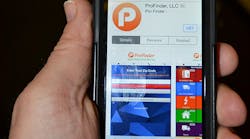Digital services linking homeowners and contractors have been around for a long time, such as Service Magic/Home Advisor, Porch or Serviz. I recently spoke with an MBA student from NYU who was, with her classmates, researching a mobile app to connect contractors and homeowner for repairs and home improvements.
“You may think that there are several such apps in the market that already do this,” Priyanka Kalia told me. “But, when we spoke to contractors who are on these apps, we learned the business model does not always favor the contractors and often hurts them with [their] income and client retention.”
She’s right about that. As one contractor put it on a Service Roundtable message board, “I have used [a mobile app provider] for two and a half years and I have been relatively successful with them as long as you actively pursue the leads they send. Also, you must be willing to actively challenge them when a lead is bogus.” Moreover, this contractor said, hedrops them as soon as he has other business.
This is not a passing fad. Venture capitalists love this stuff — they see on-demand local services as the next huge untapped market. Uber has a market capitalization of $40 billion, enough to buy every taxi in America several times over. — Bob Mader
A watershed moment occurred April 1 when Amazon launched Amazon Home Services using a true Uber model and immediately becoming the leader in on-demand local services. Zimmerman, Minnesota, contractor Eric Aune wrote a lengthy review of Amazon Home Services on Mechanical-Hub.com, noting two important distinctions that separate Amazon from the others — contractors get on the service by invitation-only and they’re thoroughly vetted; and customers have to create a profile that includes their credit card number.
The customer, who probably doesn’t know the difference between a compressor and a condenser, has to self-diagnose the problem. Amazon then tells them that based on their description, their repair should cost, let’s say, $200, and bills their credit card. Unlike the other services, they aren’t sending you a lead; they’re sending you a sold job. Then your tech comes out, diagnoses the real problem, and has to have the customer service skills to tell them that the repair is going to cost X-amount more money. Because the customer has committed to the service and already paid for at least part of it, that conversion should be straightforward, if not easy.
You have to pay Amazon a percentage of the ticket that varies on a sliding scale, but maxes out at 20%. On the other hand, if it costs you $400-plus to acquire a new customer, you just gotten a new customer for nada.
“I’d get on board soon as possible,” says consultant and retired California contractor Ed O’Connell. “The 20% fee — I think it’s deducted from the total selling price up to a certain amount — for getting a new client is well within the cost most of us pay for advertising to get the same results. After the first call, well, if the customer ain’t yours for life, then it’s your problem.”
It’s not just venture capitalists driving the market — it’s your customers. Consultant and home performance expert Peter Troast recently wrote a piece about “Uberization” and ODLS, where he pointed out the opacity of homeowners trying to figure out HVAC service.
“It is our reality that we have to overcome some level of distrust,” wrote Troast, the founder and CEO of Energy Circle. “People like to know what they’re getting into. Home contracting can be one of the most foreign and frustrating ventures for homeowners. Who’s doing the work? What are they doing? Are they over-charging?”
Your customers will drive home services apps. It will give them the feeling that they have some modicum of control over their service call. If your customers demand it, you’ll have to react.










